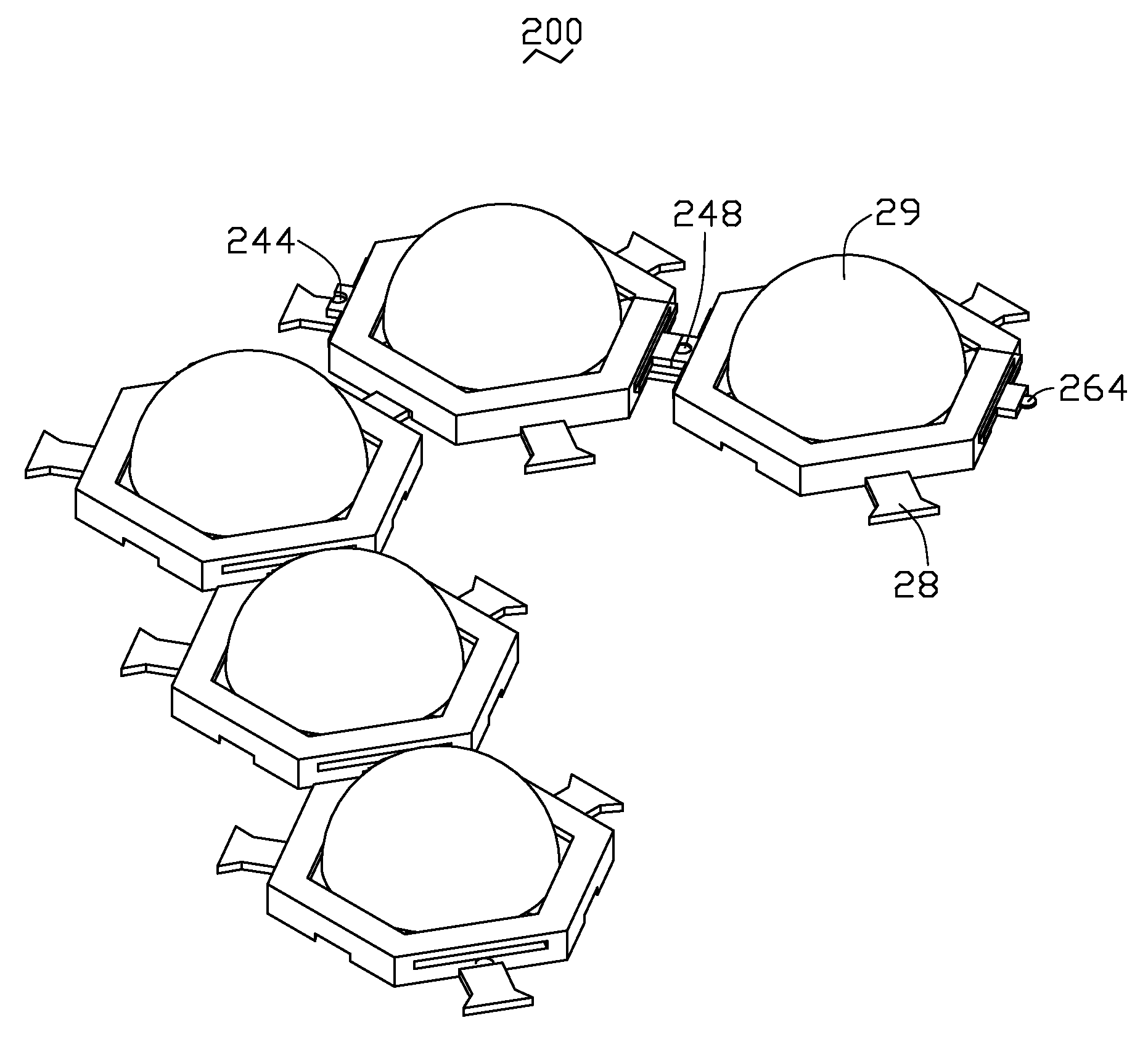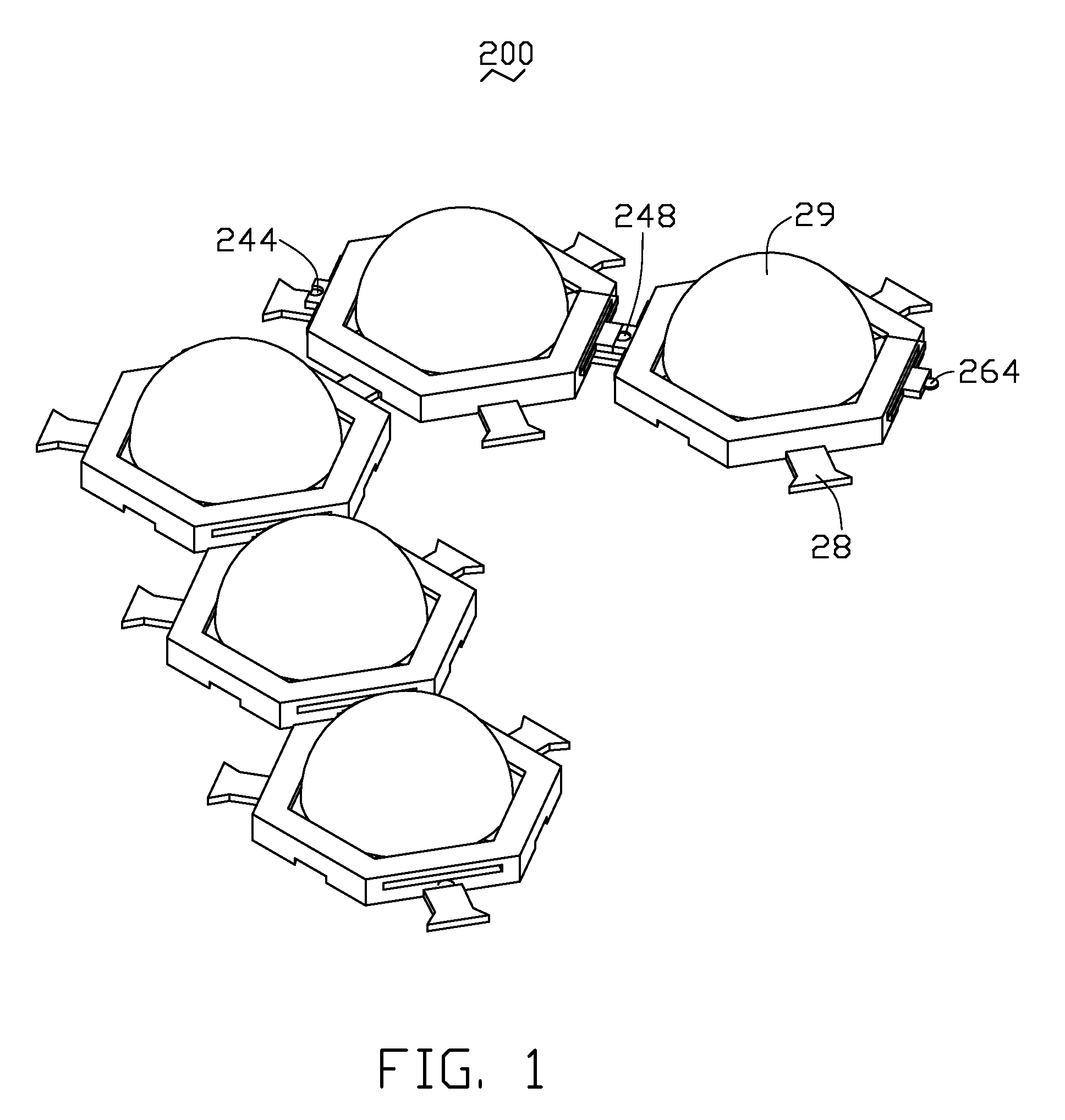LED assembly with separated thermal and electrical structures thereof
- Summary
- Abstract
- Description
- Claims
- Application Information
AI Technical Summary
Benefits of technology
Problems solved by technology
Method used
Image
Examples
first embodiment
[0035]Referring to FIGS. 1 and 8, an LED assembly in accordance with the present invention comprises a substrate 10 and an LED unit 200 mounted on the substrate 10.
[0036]The substrate 10 is solid and entirely made of metal, such as copper, aluminum or an alloy thereof. The substrate 10 has a large and flat top surface for mounting the LED unit 200 thereon.
[0037]Also referring to FIGS. 4-7, the LED unit 200 is constructed by soldering a plurality of LEDs 20 together. Each LED 20 comprises a hexagonal base 22 defining a hexagonal cavity 220 therein, an LED die 23 adhesively attached in the cavity 220, a first electrode lead 24 and a second electrode lead 26 extending into the base 22 and electrically coupled to the LED die 23 via bonding wires (not shown), three legs 28 extending radially and outwardly from the base 22, and a hemispherical encapsulant 29 (see FIG. 1) encapsulating the LED die 23 therein. The base 22 is made of a material having a good heat conducting and electrically ...
eighth embodiment
[0052]Referring to FIG. 22, which shows an LED assembly in accordance with the present invention. In order to conduct heat generated by an LED die 23g to the substrate 10 more rapidly, a portion of a base 22g placed between the LED die 23g and the substrate 10 is omitted, while the LED die 23 is directly bonded on the top face of the substrate 10 via a kind of heat conducting adhesive 25g. Preferably, a thickness of the heat conducting adhesive 25g is selected to be less than 0.01 inches, for obtaining a balance between a good heat conducting capability and a sufficient gluing force. The base 22g of each LED 20g is annular to spacedly surround the LED die 23g. A first lead 24g and a second lead 26g are respectively inserted into the base 22g with inner parts (not labeled) thereof being exposed and outer parts (not labeled) thereof hovering above the substrate 10. The LED die 23g is electrically connected to the first and second leads 24g, 26g via golden wires (not labeled). An encap...
PUM
 Login to View More
Login to View More Abstract
Description
Claims
Application Information
 Login to View More
Login to View More - R&D
- Intellectual Property
- Life Sciences
- Materials
- Tech Scout
- Unparalleled Data Quality
- Higher Quality Content
- 60% Fewer Hallucinations
Browse by: Latest US Patents, China's latest patents, Technical Efficacy Thesaurus, Application Domain, Technology Topic, Popular Technical Reports.
© 2025 PatSnap. All rights reserved.Legal|Privacy policy|Modern Slavery Act Transparency Statement|Sitemap|About US| Contact US: help@patsnap.com



